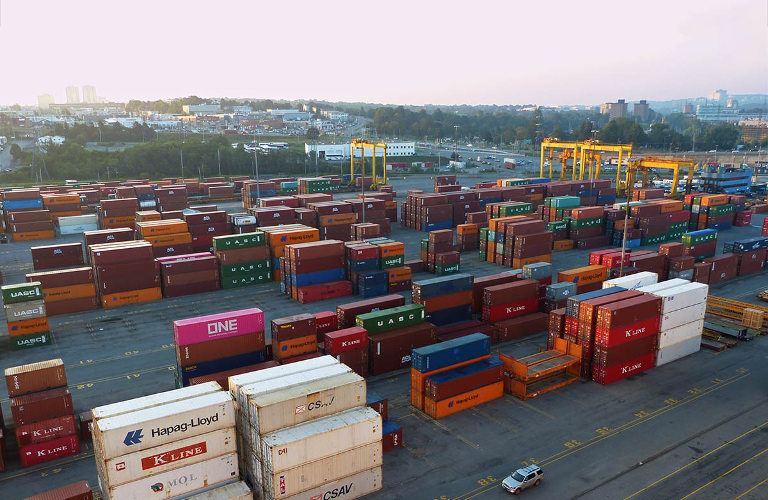Why do we have so much stuff? Why is it so hard to find good stuff? And when our cheap stuff breaks, why is it so hard to fix it?
These questions are at the heart of our stories in 21st century industrialized nations, and these question are at the heart of Sandra Goldmark’s new book Fixation: How to Have Stuff Without Breaking the Planet.
As a theatre set designer Goldmark is attuned to the roles that things play in our personal stories. As a proprietor of a New York City “fix-it” shop, she understands why people want to keep and repair broken things, and why that is often unreasonably difficult.
Fortunately for us she is also a darn good writer, whether she’s discussing the details of a damaged goose-neck lamp or giving an overview of a globe-spanning logistics system that takes materials on a one-way journey first to far-off factories, then to warehouses and stores, then to our homes, and finally, too soon, to our landfills.
A copy of Fixation is one of the best gifts you could give or receive this season.
Early in the book Goldmark asks why we are so attached to things, even when they have broken and it is more work to get them fixed than to buy new. This attachment, she says, is not pathological and indeed is at the very heart of being human. While many animals use simple tools, such as picking up a rock to crack nutshells, only humans make a point to save those tools. Living “in the moment” is great, but making preparations for the future is a key to our evolutionary success. Storing, maintaining, even loving our tools is thus a big part of human cultures.
The balance is seriously tilted, nevertheless, by an economic machine that depends on us buying more, all the time, and in particular buying new. Goldmark uses Ikea as a case study, describing their concerted effort to persuade customers that furniture is fashion, and we should buy new tables almost as often as we buy new clothes.
Then, too, there is carefully planned obsolescence, in products that we otherwise might keep for many years. Apple’s famously hard-to-replace batteries provide one example. Goldmark also describes an almost-durable desk lamp, which can be counted on to break because there is a plastic component where the lamp joins the gooseneck – that is, precisely where there is repeated motion and stress. Goldmark writes:
“Plastic is, very simply, a pain in the butt to fix. It’s hard to glue, and once compromised—cracked, scratched, nicked—it’s very hard to do anything useful with it at all. If you’ve got a plastic finish on something, you can, maybe, paint it or touch it up. But when plastic is used on component parts that take any stress, especially moving parts, it can mean that one small break makes the entire object useless.”
While plastic plays a big role in the factory-to-landfill pipeline, so too does cheap energy and international wage disparity:
“When a manufacturer might be paid three dollars per hour to make a coffee machine in China or India, when raw materials and fuel for shipping are cheap, and a fixer in the States requires at least minimum wage, and hopefully more, it’s easy to see how making new cheap stuff became the dominant model.”
Thus in the United States in 2018, Goldmark writes, people spent about $4 trillion on new stuff but only $17.5 billion on used goods.
And while Americans like to celebrate their historical prowess as “makers”, not much is Made In America anymore. The makers, Goldmark writes, have been reduced to trash-makers. And unfortunately as the skills in making things atrophied, so too did the skills in repairing things.
Getting beyond this unsustainable economy will require changes in attitudes, changes in education, changes in the manufacturing and retail chains, changes in wage allocations. Goldmark addresses all of these weighty subjects in beautifully accessible ways. With a nod to Michael Pollan, she rewrites his food mantra to apply to all the other things we bring home:
“Have good stuff (not too much), mostly reclaimed. Care for it. Pass it on.”
Donating used goods helps, she writes, but “donating alone is not enough. If we’re not buying used ourselves, then we’re just outsourcing the responsibility of ‘closing the loop.’”
Caring for our things is both a simple and a complex undertaking. That means taking time to seek out quality items which will last and which can be repaired. It means promoting and honouring “embodied cognition” – simultaneous learning by head and hands, as practiced by people skilled in diagnosing and repairing. It means supporting companies that repair and resell their own products, and supporting local repair shops so they can pay a living wage.
As humans we will always want, need and have things, but our current way of life is unsustainable and we need to do much better. The good news, she says, is that
“We have the tools. We can build a better, circular model of care, of stewardship, of maintenance. A model where we value what we have.”
Photo at top of page: Freight yard at sunrise. Fairview Cove Container Terminal, Halifax, Nova Scotia. August 29, 2018. (click here for full-screen view)








